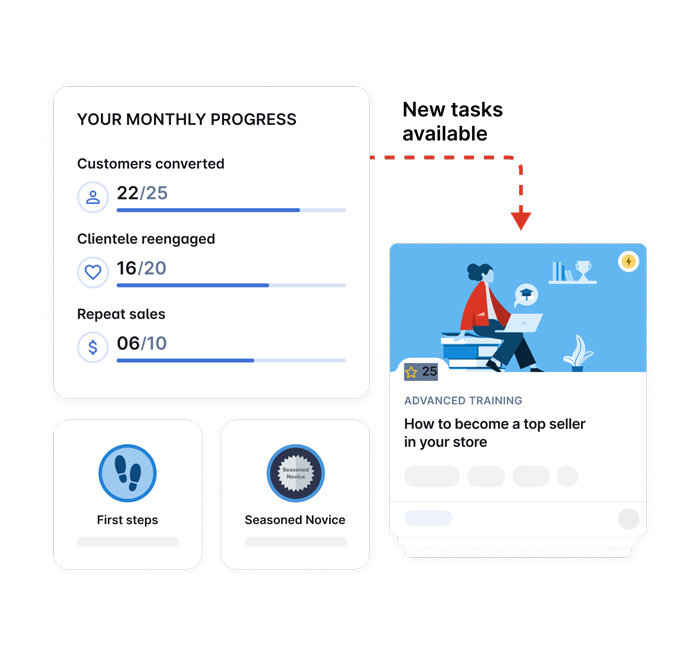Don’t Blame Shrinkage: Why Poor Digital Strategy Might Be Responsible for Retail Uncertainty
While retail is a cyclical industry, it’s important to be honest about transformations, negative and positive, in the industry. At the time of writing, in the US there have been 12 retail declarations of bankruptcy so far in 2023, over twice as many as 2022 in total.
Meanwhile, sales for mainstay companies like Macy’s are sliding downward as customers turn toward Amazon as a one-stop retail store, saving themselves gas and time. And after a disappointing holiday season last year, companies are bracing for another one, as customers are buffeted by continued inflation, depleted savings, higher interest rates, and layoffs in the broader economy.
We are running the risk, if we choose not to innovate, of retail becoming a different industry, one with countless bankrupted legacy retailers, an increasingly flourishing Amazon, and an average customer who avoids retail stores because they feel like ghost towns, as so many shopping malls have become.
🏆
The 2024 Creative Retail Awards are open for entries.
The Creative Retail Awards are much more than a mere accolade; they represent the pinnacle of achievement in the retail industry. Garnering a nomination or winning one of these awards is a testament to innovation, excellence, and leadership.
www.creativeretailawards.com
The Retailer’s Blame Game
Retailers might be tempted to blame shrinkage, credit card delinquencies, and other factors outside of their control for lower returns. Certainly, these elements make an impact. But particularly for high-ticket retailers (furniture, designer clothing, outdoors), who have higher-income clientele, the question must be asked: are they thinking innovatively enough about their frontline workforce to counteract negative sales trends?
Logically speaking, lower-income clientele are more susceptible to sudden swings in economic conditions. It’s more likely that higher-income customers are not not buying, but rather searching for deals online. Shoppers across income levels are nothing if not hesitant and choosy in the post-pandemic era, defined as it is by uncertainty and unpredictability. A more hesitant consumer is not a consumer who is inherently prone to not buying merchandise, but instead one who must be converted, one who must be sold to, persuaded of the value of the purchase.
How, then, do retailers create a more “activist” frontline? Not in the political sense, of course–in the “entrepreneurial” sense. The goal here is to transform the frontline from passive individuals to be bought from at a retail location into entrepreneurial sellers who strategically and proactively convert customers. But as a retailer, how do you enable them to do that?
Autonomy for the Retail Sales Force
In a recent Frontiers in Psychology article, researchers distinguish between individuals who prefer “security” in work situations and those who prefer “autonomy.” People who prefer security will tend to stay at jobs where they can “make enough money” without having to worry about whether they’ll be retained. On the other hand, individuals who prefer autonomy want to be able to determine their pathway of productivity, the route they take toward earning a living. They want their work experience to fit the mold of their own skills and abilities. Particularly in a post-pandemic society–after COVID caused many to reevaluate their careers–the need for autonomy is real.
Ultimately, the researchers end up recommending an approach that “elastically” offers “satisfactory support to individual needs for both security and autonomy.” Retailers seeking to outperform their expectations for the holiday season can glean something important from this insight. Namely, while retailers can only go so far toward attracting individuals who favor security, given that workforce churn is a large part of the industry, they can appeal to individuals who are motivated by autonomy, giving them the tools to be entrepreneurial, activist sellers on the ground.
How is this possible? Through what experts are beginning to call “frontline performance enablement technology,” or just frontline enablement for short. This is technology that goes into the hands of frontline associates and managers, not merely to train them to “know” X or Y detail about store SKUs, but to enable them to do more.
This allows them to be more self directed, more autonomous, more entrepreneurial. It satisfies that need for autonomy while transforming them into salespersons, not simply “associates.”
Though researchers have found that in terms of tech, 65.1% of business leaders plan to increase their customer experience technology spend by (on average) 24%–in addition to e-Commerce spend–by overemphasizing these dimensions of the holistic retail experience, they risk underemphasizing customer person-to-person interactions with workforce on the ground.

As a point of reference, companies like Trader Joe’s and IKEA became household names–companies whose products consumers want to be associated with–in large part because of the in-store experience they delivered. Investing in fancy virtual merchandising displays and e-Commerce isn’t going to accomplish that. But creating an activist workforce–a frontline with whom customers actually want to interact–just might.
Targeted Activities in the Flow of Work
How can this be accomplished through technology? Frontline enablement technology uses targeted, personalized activities to drive sales performance and customer engagement in the flow of work, via an app on a mobile device. Where past technologies (like Learning Experience Platforms) focused on lessons, enablement tech focuses on concrete activities, blending the virtual experience of the platform with real-time sales operations.
The technology smartly moulds itself to suit the individual employee’s performance, goals, and preferences, perfect for those individuals who relish autonomy. For those who strive for security, the technology helps them perform better, assisting their climb up the ranks of store staff. In the end, such technology works to the benefit of the employee as well as the customer, not to mention the team and store.
Imagine an employee at an outdoor store, Tina. Based on her recent performance metrics, she might receive a notification to focus on selling a specific brand of camping tent–one which the company has overstocked–with the offer of a monetary reward, prize, or gift card if she reaches her weekly sales goal. She might get a notification shortly thereafter with an embedded video demonstrating the high points of this brand of tent, or a suggestion through the app that she reach out to a past customer whose buying history indicates a potential interest in this camping tent brand.
The app is targeting Tina’s weekly goals, as well as the company’s goal of reducing this tent’s stock, while making her more razor-focused, more engaged in the flow of work. She knows her goals and how to achieve them, and also has a concrete incentive for completing them, as well as a single source of truth in which to complete them.
All the while the technology bends and transforms according to her actions and preferences, in order to create the right selling behaviors for the generation of revenue. Think of this tech like memory foam, changing shape to fit, and feed back into, the desires of the user.
Statistical results bear out the success of this advanced technology. In our Annual Global Sales Force Report, analysts at my company Rallyware determined that in 2022, the latest year for which data was available, sellers actively using frontline enablement technology increased customer cart size 3X on average. Multiply that by thousands of associates, and that goes a long way toward countering some of the trends that threaten to drag down big retail at the cusp of the holiday season.
Digital Strategy and the Holiday Season
The holiday season is an important hinge for retail. The period from Halloween through Christmas is obviously a time when successful retailers can make up slack from the rest of the year and make the final stretch toward their revenue projections. More symbolically, however, the season stands as a signal of the buying trends to come, demonstrating how consumption patterns have changed over the past year and indicating how they will evolve in the coming one.
Today’s consumer requires a more persuasive, empathetic salesperson who can confidently approach prospects and close sales, who thinks not like a “drone” completing tasks but like a seller making conversions. Retailers should consider entering the holiday season with a digital strategy that empowers the frontline to become exactly this.
Rallyware’s all-in-one performance enablement platform centralizes many tools for the frontline in a single platform, from learning and sales incentives to communications. Sellers use the platform in the flow of work, becoming more engaged and productive. If you’re a retailer and want a free product consultation with one of our experts, click here!














